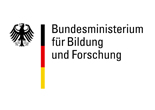Foren › B-Module Wirtschaftswissenschaft Fernuni Hagen › Theorie der Leistungserstellung › Einsendearbeit Kurs 41531 Substitutionale Produktionsmodelle Fernuni HagenWS1415
Schlagwörter: Kurs 41531, Modul 31531, Substitutionale Produktionsmodelle, Theorie der Leistungserstellung, WS14/15
-
AutorBeiträge
-
14. Oktober 2014 um 10:47:05 Uhr #108514
Hey Leute,
dass sind meine Lösungen zu der Einsendearbeit zum Kurs 41531 Substitutionale Produktionsmodelle zum Modul 31531 Theorie der Leistungserstellung im Wintersemester 2014/2015. 8)
14. Oktober 2014 um 12:26:09 Uhr #118041Aufgabe 1:
a) um eine Neoklassische Produktionsfunktion, bzw. um eine CES-Produktionsfunktion
b) t = 1, da CES-Produktionsfunktionen in einfacher Erweiterung linearhomogen sind
c) [{s_{12}} = – frac{{d{r_1}}}{{d{r_2}}} = frac{{frac{{partial x}}{{partial {r_2}}}}}{{frac{{partial x}}{{partial {r_1}}}}} = – frac{{2 cdot left( {2 cdot r_1^{frac{1}{2}} + r_2^{frac{1}{2}}} right) cdot frac{1}{2} cdot r_2^{ – frac{1}{2}}}}{{2 cdot left( {2 cdot r_1^{frac{1}{2}} + r_2^{frac{1}{2}}} right) cdot 2 cdot frac{1}{2} cdot r_1^{ – frac{1}{2}}}} = frac{{r_1^{frac{1}{2}}}}{{2 cdot r_2^{frac{1}{2}}}}]
Anzeige
Optimal für die Klausurvorbereitung an der Fernuni: Unsere Komplettpakete Grundlagen der Statistik für nur 89,90 €.
14. Oktober 2014 um 12:39:13 Uhr #118042d) Es gilt:
[{s_{12}} = frac{{{q_2}}}{{{q_1}}} Leftrightarrow frac{{r_1^{frac{1}{2}}}}{{2 cdot r_2^{frac{1}{2}}}} = frac{3}{{12}} Leftrightarrow r_2^{frac{1}{2}} = 2 cdot r_1^{frac{1}{2}}]
Der optimale Faktoreinsatz:
[x = f({r_1}) = {left( {2 cdot r_1^{frac{1}{2}} + 2 cdot r_1^{frac{1}{2}}} right)^2} = 16 cdot {r_1} Leftrightarrow r_1^ * = frac{1}{6} cdot x]
und
[x = f({r_2}) = {left( {r_2^{frac{1}{2}} + r_2^{frac{1}{2}}} right)^2} = 4 cdot {r_2} Leftrightarrow r_2^ * = frac{1}{4} cdot x]
Folglich die Kostenfunktion:
[K(x) = {q_1} cdot r_1^ * (x) + {q_2} cdot r_2^ * (x) = 12 cdot frac{1}{{16}} cdot x + 3 cdot frac{1}{4} cdot x = frac{3}{4}x + frac{3}{4}x = 1,5x]
14. Oktober 2014 um 12:46:15 Uhr #118043e) [bar x = f(0;{bar r_2}) = {left( {2 cdot {0^{frac{1}{2}}} + bar r_2^{frac{1}{2}}} right)^2} = {left( {2 cdot {0^{frac{1}{2}}} + {{25}^{frac{1}{2}}}} right)^2} = 25]
Es wird also ein Output von min 25 Mengeneinheiten produziert.
14. Oktober 2014 um 12:56:00 Uhr #118044f)
[x = f({r_1};{bar r_2}) = {left( {2 cdot r_1^{frac{1}{2}} + bar r_2^{frac{1}{2}}} right)^2} = {left( {2 cdot r_1^{frac{1}{2}} + 5} right)^2} Leftrightarrow r_1^{frac{1}{2}} = frac{{{x^{frac{1}{2}}} – 5}}{2} Rightarrow {bar r_1}(x) = {left( {frac{{{x^{frac{1}{2}}} – 5}}{2}} right)^2}]
[K(x) = {q_1} cdot {r_1}(x) + {q_2} cdot {bar r_2} = 12 cdot {left( {frac{{{x^{frac{1}{2}}} – 5}}{2}} right)^2} + 3 cdot 25 = 3 cdot x – 30 cdot {x^{frac{1}{2}}} + 150]
Anzeige
Weiterbildung zum Geprüfte/r Wirtschaftsmathematiker/in (FSGU)- staatlich zugelassen. Förderung über Bildungsgutscheinmöglich.
14. Oktober 2014 um 13:06:06 Uhr #118046g)
Stückkostenfunktion:
[k(x) = frac{{K(x)}}{x} = frac{{3x – 30{x^{frac{1}{2}}} + 150}}{x} = 3 – 30{x^{ – frac{1}{2}}} + 150{x^{ – 1}}]
Betriebsoptimum:
[k'(x) = 15{x^{ – frac{3}{2}}} – 150{x^{ – 2}}mathop = limits^! 0 Leftrightarrow {x^{frac{1}{2}}} = 10 Rightarrow {x^0} = 100]
Das Betriebsoptimum ist also [{x^0} = 100]ME.
14. Oktober 2014 um 13:13:34 Uhr #118047Aufgabe 2:
a)
-fester Input von[{bar r_2} = 16]
-kein Input von Faktor 1
Also:
[hat x = f(0;{bar r_2}) = 3 cdot 0 + bar r_2^{frac{1}{2}} = {16^{frac{1}{2}}} = 4]
Der Mindestoutput ist [hat x = 4ME].
14. Oktober 2014 um 13:22:27 Uhr #118048b)
Kostenfunktion nur gültig für Outputs von [x ge hat x = 4]
partielle Produktionsfunktion:
[x = f({r_1};16) = 3{r_1} + 4] das heißt für [{r_1}:{r_1}(x) = frac{{x – 4}}{3}]
[hat K(x) = {q_1} cdot {r_1}(x) + {q_2} cdot {bar r_2} = 30 cdot frac{{x – 4}}{3} + 2,5 cdot 16 = 10 cdot x – 40 + 40 = 10 cdot x]
Anzeige
Klausur erfolgreich bestanden? Freue Dich doppelt!
Wir rechnen Dir Deine Klausur auf einen Weiterbildung bei der FSGU AKADEMIE an.
14. Oktober 2014 um 13:26:03 Uhr #118049c)
[{r_1}(bar x,{r_2}) = frac{{bar x – r_2^{frac{1}{2}}}}{3}]
mit [0 le {r_2} le {bar x^2}]
Umstellung für festes Outputniveau der Produktionsfunktion [bar x Rightarrow {r_2}]
[{r_2}(bar x,{r_1}) = {(bar x – 3 cdot {r_1})^2}]
mit [0 le {r_1} le frac{1}{3} cdot bar x]
14. Oktober 2014 um 13:53:00 Uhr #118050d)
Grenzrate der Substitution = dem Verhältnis der Faktorpreise:
[frac{{frac{{partial x}}{{partial {r_1}}}}}{{frac{{partial x}}{{partial {r_2}}}}} = frac{{{q_1}}}{{{q_2}}} Rightarrow frac{3}{{frac{1}{2} cdot r_2^{ – frac{1}{2}}}} = frac{{30}}{{2,5}} Leftrightarrow 6 cdot r_2^{frac{1}{2}} = 12 Leftrightarrow r_2^{frac{1}{2}} = 2 Rightarrow r_2^* = 4]
Im Kostenoptimum fixer Einsatz von Faktor 2.
Für den Einsatz von [r_2^* = 4] entsteht ein Mindestoutput von [{x^*} = 2]
Produktion für Outputs [x le {x^*} = 2] erfolgt nur mit Einsatz von r2, ohne Einsatz von r1, also:
[bar x = f(0;{r_2}) = 3 cdot 0 + r_2^{frac{1}{2}} Rightarrow {r_2} = {bar x^2}]
Kostenfunktion K(x):
[K(x) = left{ begin{array}{l}
{q_1} cdot r_1^*(x) + {q_2} cdot 0\
= 2,5 cdot {x^2}\
{q_1} cdot r_1^*(x) + {q_2} cdot r_2^*\
= 30 cdot frac{{x – 2}}{3} + 2,5 cdot 4\
= 10 cdot x – 10
end{array} right.]
Dabei gilt:
[0 le x le 2]
und
[x > 2]
Kurz:
[K(x) = left{ begin{array}{l}
2,5 cdot {x^2}\
10 cdot x – 10
end{array} right.]
Dabei gilt:
[0 le x le 2]
und
[x > 2]
-
AutorBeiträge
Du musst angemeldet sein, um auf dieses Thema antworten zu können.
Suche
Login
Kostenloses E-Book

Das E-Book "Welches Wahlpflichtmodul passt zu mir?" besteht aus folgenden Inhalten:
∙Übersicht der Wahlpflichtmodule
∙Auswertungen
∙uvm.
Beliebte Themen
Online Vorlesungen
- B-Module33 Produkte
- Einführung in die BWL55 Produkte
- Einführung in die VWL44 Produkte
- Externes Rechnungswesen44 Produkte
- Fernlehrgang1313 Produkte
- Grundlagen der Statistik1313 Produkte
- Grundlagen des Privat- und Wirtschaftsrechts55 Produkte
- Internes Rechnungswesen und Funktionale Steuerung55 Produkte
- Investition & Finanzierung66 Produkte
- Klausurlösungen (Fernuni Hagen)1111 Produkte
- Komplettpakete99 Produkte
- Kostenlose Vorlesungen11 Produkt
- Makroökonomik99 Produkte
- Mikroökonomik88 Produkte
- Online Vorlesung7878 Produkte
- Operations Research22 Produkte
- Probevorlesung11 Produkt
- Unternehmensführung11 Produkt
- Wirtschaftsinformatik11 Produkt
- Wirtschaftsmathematik1212 Produkte













